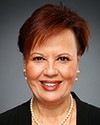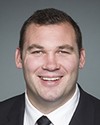To be quick and to maximize the time, part of the mandate is to go into under-represented groups. It is something that our nation is not doing well. When it comes to the potential of our nation, I think when it comes to young people, women, first nations and aboriginal people that's who we need to tap into.
The first, and I would say the overlying issue for our business owners, our entrepreneurs is that we need to make it easier for them to do business. That's what we refer to as the red tape or the administrative burden. That's something we need to reduce and we need to do a better job at. We need to increase access. That's one point, I would say.
When it comes to the programs and services that the government offers, what I'm finding as I travel across the nation is that oftentimes by the time they find out about programs and services it's too late. They've already had to face many challenges and difficulties. That is something I would like to see us do better, allow Canadians to know what programs and services are available.
Something that excites me is the RDAs, the regional development agencies, coming under one portfolio so that we're sharing best practices. Then we can allow ourselves the opportunity to share best practices as to what's working. What I'm finding is that there are certain regions that are better at communicating than others, and this is an obstacle that we'd like to see overcome.
I work closely with Futurpreneur. Futurpreneur is reaching out to our youth. Forty per cent of their clients, if I may, are women. We're learning from them. They want to do more. They're ready for the challenge, and I'm excited to see that kind of impact.
I am communicating closely with them as to how they are engaging those groups and what challenges they are facing. For every round table or every community I visit, one thing I ask for is always to do a round table with women entrepreneurs. Not only do I meet with our, I would say routine stakeholders who have always interacted with government, but I also try to make a point of tapping into people within that community and utilizing the resources of the department to ensure that there are many people around that table who have never been invited before, so that we can see where some of those challenges are.
You will see when it comes to the programs and the way that we're communicating, we're allowing those inclusive values to be shared. Something that this government has done very well is that our cabinet has gender parity. There has been this huge opportunity to empower women like we've not seen in a long time. The Prime Minister has taken a great leadership role as well to ensure that the role of a woman is actually within the workforce. They are job creators and we want to empower them.
There are other challenges that all people face. We're providing the ability to allow all Canadians to know that we need to work together and we need to collaborate to overcome those obstacles.
When it comes to women, I make a conscious effort to reach out to them. Just like Minister Bains and Minister Duncan, my door is open, and we are available to hear that constructive feedback. We've received a lot of constructive feedback. That's something I find when it comes to women especially, not to sound so biased. It's constructive feedback as to how we can make it easier and what is coming in the way. That's one step as well.
Then, on first nations and aboriginal communities, I feel that being given this role it's important for me to take that first step to reach out into those communities so that we are present. The government of the day cannot wait for Canadians to come to us with their concerns. I would like to see us take more of a proactive approach, and that's the style that I'm trying to go ahead with.







